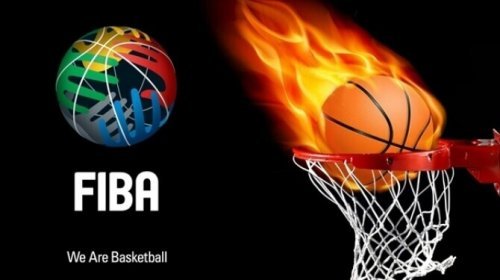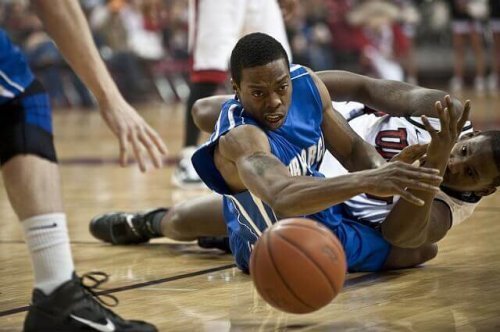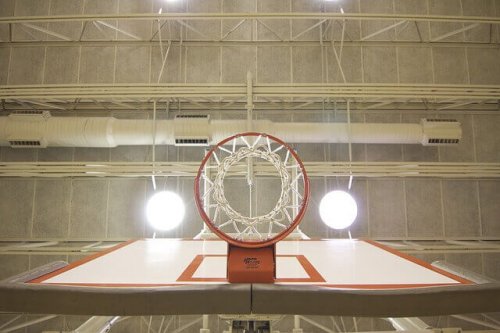The Future of European Basketball

Due to the way in which European basketball has been evolving these last few years, it seems clear that the major leagues are looking for a way to approach the American competition model. This is good because they’re an example of how to ensure the economic and financial stability of the institutions. At the same time as becoming a worldwide reference.
In order to reach the NBA, the so-called European Champions Cup was founded in February 1958, organized by FIBA. Obviously, trying to emulate their football counterpart that was so successful.
FIBA Europe was seeking to reach the throne of the best world league that the NBA occupies – and always has – by imitating their namesake UEFA, which had so much success.
This first continental competition was ongoing from that moment until the 1999-2000 season; the date in which the well-known Euroleague started. From here, we could say that problems began to arise that have been dragging on to date.
FIBA hadn’t registered the name of “Euroleague”, despite having made use of it since 1996. It was simple enough for a private company to take over it, leaving the world’s largest body lacking any legal resources in this regard.
A difficult road

In this scenario, the International Federations had no choice but to look for a new name for its European championship. Consequently, the season had two continental competitions: the SuproLeague (the former European Cup), and the Euroleague.
The teams invited to these competitions also took part in the dispute and divided their participation in both of them.
By having two competitions, there had to be two champions in the summer of 2000: the Maccabi Elite for the SuproLeague and the Kinder Bologna for the Euroleague.
The leaders of the two competitions realized the need to unify. Due to the Euroleague’s strong position, the teams that had participated in the Suproleague joined the Euroleague in the 2000/2001 season and onward.
This is how they made a pact in which FIBA was responsible for the organization of international league competitions – Eurobasket, Mundobasket, and JJOO, while the Euroleague was in charge of continental club competitions – Euroleague and ULEB.
System of competition
After briefly explaining the difficult path that European basketball has had to travel, it’s necessary to talk a little about the competitive system, as well as its modifications.
The Euroleague is gradually introducing these changes with the purpose of increasing economic profitability. This makes the competition more appealing for the teams and attracts more fans. Undoubtedly, the long-term goal is, once again, to reach the NBA’s status.
Interesting fact: The best All-Star 5s in history
Champions League model
In its beginnings, the best continental competition was made up of 24 teams. They were divided into four groups of six teams each. The best four from each group qualified for a second group stage consisting of four groups of four teams each.
The first and second teams to classify for each group would go on to qualify for the quarterfinals. Here, they were to face each other in five games and the best would go on to the final four.
This model was put to use for more than ten seasons, despite being exhaustive and unattractive to the viewers.
The leaders of the Euroleague began to think about how to improve the competition. They were encouraged by the differences in television audiences and the attendance of the public to the existing pavilions between the first phases and the fourth/final four.

Mixed model
At first, the search for a more attractive competition system for the viewer didn’t have an effect on the number of teams that would participate in the Euroleague.
The quota of 24 initial teams was still in place, as well as the division into four groups of six. However, the second phase did undergo modifications in the division, there would now be two groups of eight teams.
This system contributed a greater number of attractive duels, with the consequent increase of hearings and average volume of attendance in the stadiums.
Version 2.0 of the Euroleague didn’t remain valid for too long. The benefits that were observed in regards to the previous model, accelerated the process that the Euroleague was naturally destined to follow.
“European Superliga” Model
Following this evolutionary process, it was decided to reduce the number of participants to 16; distributed as follows:
- 11 qualified teams, known as Licenses A.
- 5 participants that would vary depending on the sporting circumstances – Licenses B, C, and D.
All the teams now compete in a single regular phase, all facing each other. Out of this, eight qualify for the quarterfinals. Four teams will play the final four by winning a series of best of five games.
This system has been in force since the 2016/2017 season. In its short life period, it has proven its effectiveness thanks to the high number of appealing matches that occur every day.
The fans have been able to reward it in the form of consumption, which in addition to the agreement with IMG since 2015, has been the cause of a considerable increase in revenues.

The future steps of European basketball
In view of the panorama, what are the future steps of European basketball? Or rather, what steps should it take to become an opponent for the NBA?
The American competition’s economic power is the main asset of European basketball when it comes to attracting talent to the league. Being equal requires the creation of a closed league with fixed teams every year.
This format could attract sponsors and capital for the participating teams. Hence, it is possible to compete with the best league in the world on a long-term basis.
It’s evident that this would imply a reduction of the power that the national leagues presently have; they would practically become a quarry for the teams contesting for the authentic competition.
Although, this closed league, which wouldn’t be accessed by sports merits, would have a difficult fit in our right to compete; since the standards that the European Parliament approves would require a specific exception.
Due to the way in which European basketball has been evolving these last few years, it seems clear that the major leagues are looking for a way to approach the American competition model. This is good because they’re an example of how to ensure the economic and financial stability of the institutions. At the same time as becoming a worldwide reference.
In order to reach the NBA, the so-called European Champions Cup was founded in February 1958, organized by FIBA. Obviously, trying to emulate their football counterpart that was so successful.
FIBA Europe was seeking to reach the throne of the best world league that the NBA occupies – and always has – by imitating their namesake UEFA, which had so much success.
This first continental competition was ongoing from that moment until the 1999-2000 season; the date in which the well-known Euroleague started. From here, we could say that problems began to arise that have been dragging on to date.
FIBA hadn’t registered the name of “Euroleague”, despite having made use of it since 1996. It was simple enough for a private company to take over it, leaving the world’s largest body lacking any legal resources in this regard.
A difficult road

In this scenario, the International Federations had no choice but to look for a new name for its European championship. Consequently, the season had two continental competitions: the SuproLeague (the former European Cup), and the Euroleague.
The teams invited to these competitions also took part in the dispute and divided their participation in both of them.
By having two competitions, there had to be two champions in the summer of 2000: the Maccabi Elite for the SuproLeague and the Kinder Bologna for the Euroleague.
The leaders of the two competitions realized the need to unify. Due to the Euroleague’s strong position, the teams that had participated in the Suproleague joined the Euroleague in the 2000/2001 season and onward.
This is how they made a pact in which FIBA was responsible for the organization of international league competitions – Eurobasket, Mundobasket, and JJOO, while the Euroleague was in charge of continental club competitions – Euroleague and ULEB.
System of competition
After briefly explaining the difficult path that European basketball has had to travel, it’s necessary to talk a little about the competitive system, as well as its modifications.
The Euroleague is gradually introducing these changes with the purpose of increasing economic profitability. This makes the competition more appealing for the teams and attracts more fans. Undoubtedly, the long-term goal is, once again, to reach the NBA’s status.
Interesting fact: The best All-Star 5s in history
Champions League model
In its beginnings, the best continental competition was made up of 24 teams. They were divided into four groups of six teams each. The best four from each group qualified for a second group stage consisting of four groups of four teams each.
The first and second teams to classify for each group would go on to qualify for the quarterfinals. Here, they were to face each other in five games and the best would go on to the final four.
This model was put to use for more than ten seasons, despite being exhaustive and unattractive to the viewers.
The leaders of the Euroleague began to think about how to improve the competition. They were encouraged by the differences in television audiences and the attendance of the public to the existing pavilions between the first phases and the fourth/final four.

Mixed model
At first, the search for a more attractive competition system for the viewer didn’t have an effect on the number of teams that would participate in the Euroleague.
The quota of 24 initial teams was still in place, as well as the division into four groups of six. However, the second phase did undergo modifications in the division, there would now be two groups of eight teams.
This system contributed a greater number of attractive duels, with the consequent increase of hearings and average volume of attendance in the stadiums.
Version 2.0 of the Euroleague didn’t remain valid for too long. The benefits that were observed in regards to the previous model, accelerated the process that the Euroleague was naturally destined to follow.
“European Superliga” Model
Following this evolutionary process, it was decided to reduce the number of participants to 16; distributed as follows:
- 11 qualified teams, known as Licenses A.
- 5 participants that would vary depending on the sporting circumstances – Licenses B, C, and D.
All the teams now compete in a single regular phase, all facing each other. Out of this, eight qualify for the quarterfinals. Four teams will play the final four by winning a series of best of five games.
This system has been in force since the 2016/2017 season. In its short life period, it has proven its effectiveness thanks to the high number of appealing matches that occur every day.
The fans have been able to reward it in the form of consumption, which in addition to the agreement with IMG since 2015, has been the cause of a considerable increase in revenues.

The future steps of European basketball
In view of the panorama, what are the future steps of European basketball? Or rather, what steps should it take to become an opponent for the NBA?
The American competition’s economic power is the main asset of European basketball when it comes to attracting talent to the league. Being equal requires the creation of a closed league with fixed teams every year.
This format could attract sponsors and capital for the participating teams. Hence, it is possible to compete with the best league in the world on a long-term basis.
It’s evident that this would imply a reduction of the power that the national leagues presently have; they would practically become a quarry for the teams contesting for the authentic competition.
Although, this closed league, which wouldn’t be accessed by sports merits, would have a difficult fit in our right to compete; since the standards that the European Parliament approves would require a specific exception.
This text is provided for informational purposes only and does not replace consultation with a professional. If in doubt, consult your specialist.








